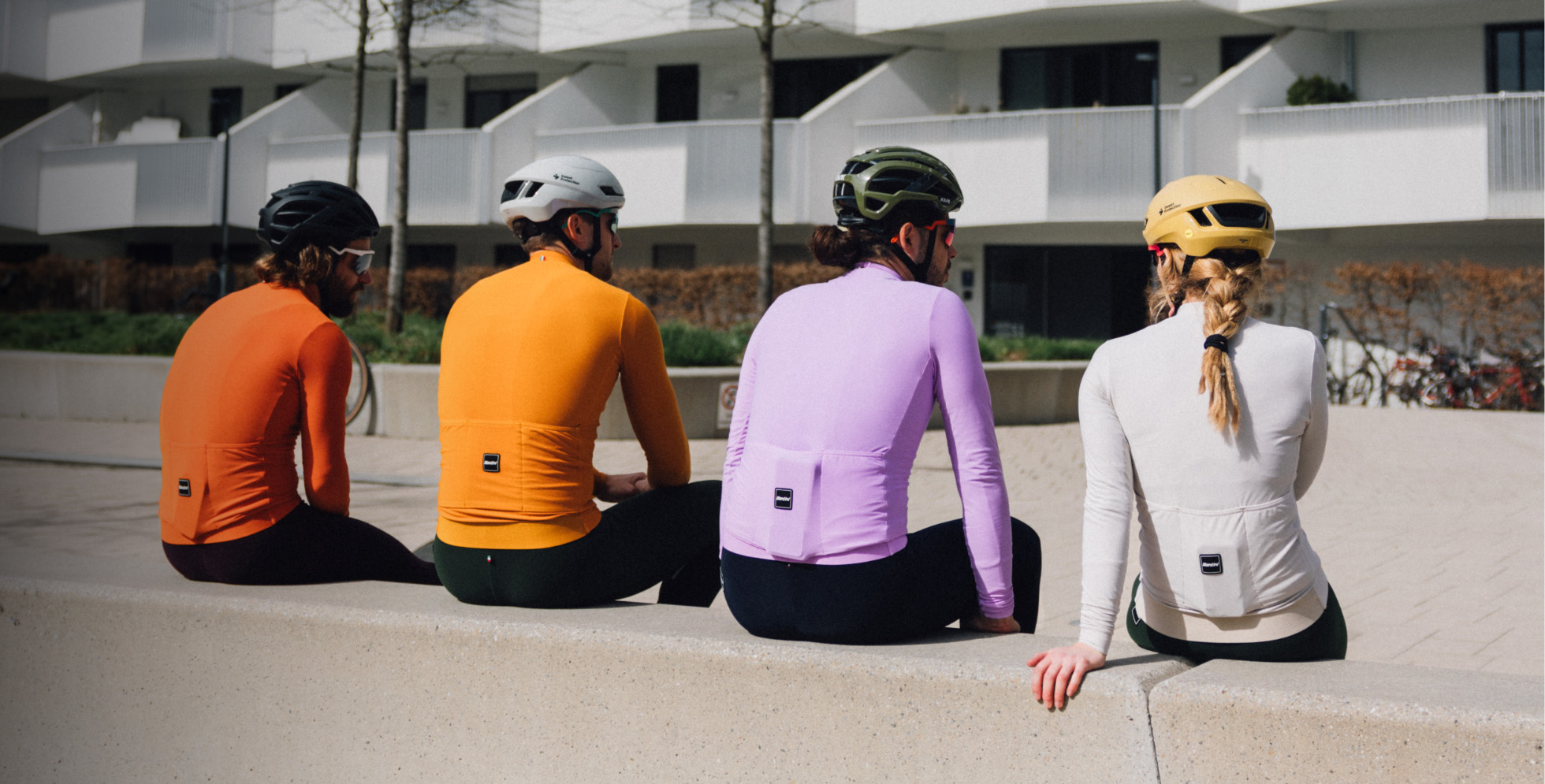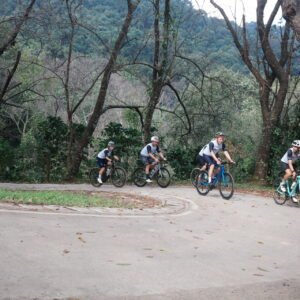Many riders head indoors when the weather cools in Autumn and stay there in Winter, but with the right apparel, most can ride all year.
It might seem straightforward and simple, but choosing the right gear and being comfortable on the bike (or not) can be the difference between riding and not riding when the weather cools.
In short, it’s all about the layers, and these can vary depending on just how cold it gets.
It’s very easy to overdress, motivated by a fear of being too cold, and it takes practice to get it right. As a general rule, if you’re already warm before getting on the bike, you’ve probably overdone it.
Thankfully, many cycling apparel items are small enough to fold up and stuff in a jersey pocket, making it easy to vary layers during a ride.
There are a plethora of cycling apparel brands available from Australian and overseas companies. Some of our favourites, who carry a range of cool-weather clothing, are Ciovita and Santini.
Here are our favourite cool-weather clothing and layers to add to your wardrobe.
Arm warmers and leg warmers
Arm warmers are one the best items of cycling apparel you’ll ever own. You can buy them in different weights and colours. They range from lightweight ones, which can also be used as sun sleeves, right up to thick fleecy-lined varieties. If you get partway into a ride and get too warm, they are easy to roll down to your wrists or remove completely and put in your pocket.
Arm warmers, knee warmers and leg warmers work well in conjunction with short sleeves and knicks, allowing you to use your warmer weather kit for those cooler days on the bike.
There are many brands of warmers. Italian brand Santini makes a range of arm warmers, as well as knee and leg warmers.
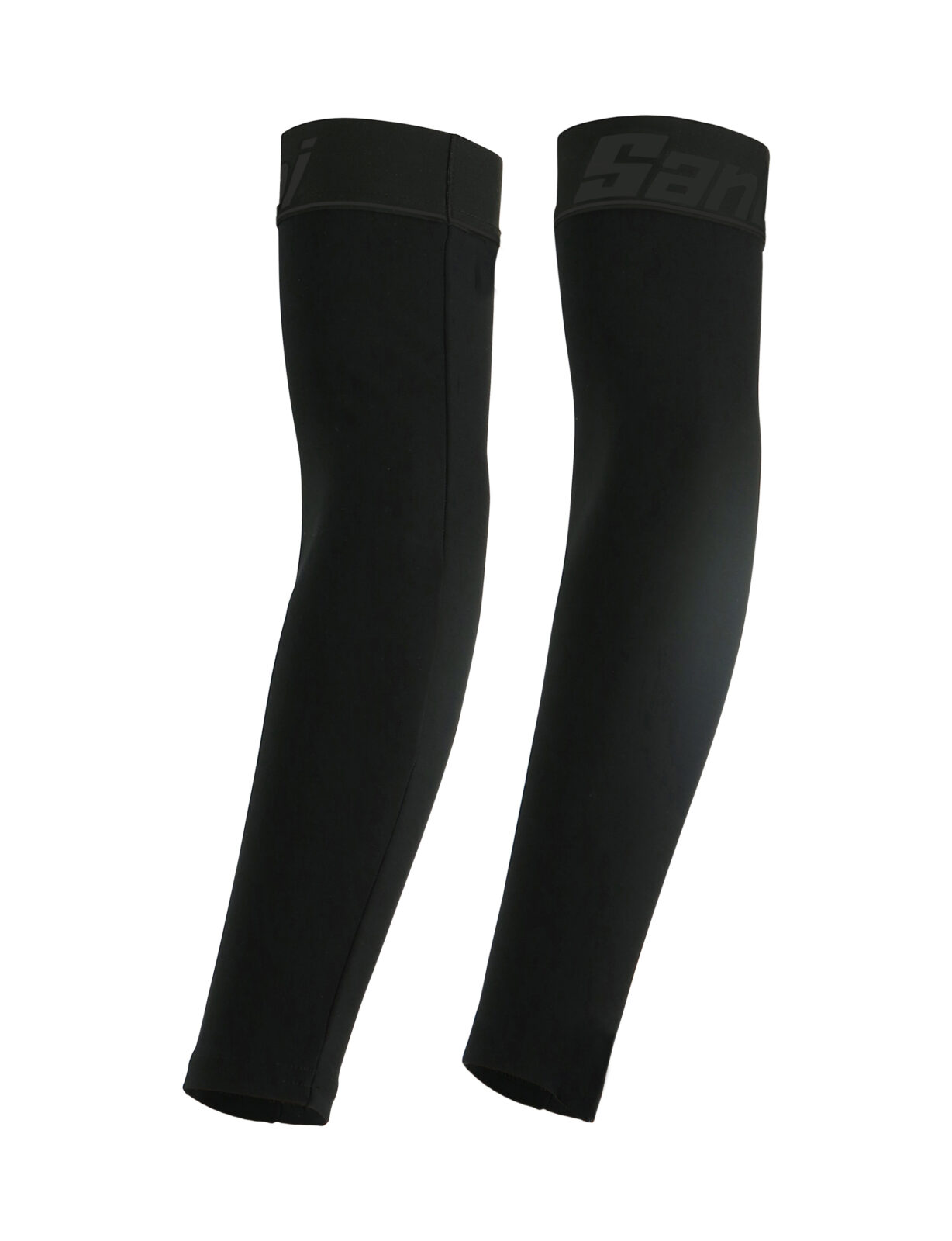
Long knicks and tights
Longer knicks, which are often called tights, vary from three-quarter length to full length. The three-quarter variety is great for Autumn and Spring riding to keep the chill on your knees. While longer knicks or tights are excellent for winter. Like other items of apparel, winter knicks vary from lightweight to fleecy lined with windproof layers.
You can buy them as regular or bib knicks, but the latter is warmer if that’s your aim. They keep the winter chill at bay by partly covering your upper body as well and overlap with other apparel. Santini has a range of three-quarter and full-length bib knicks and tights.
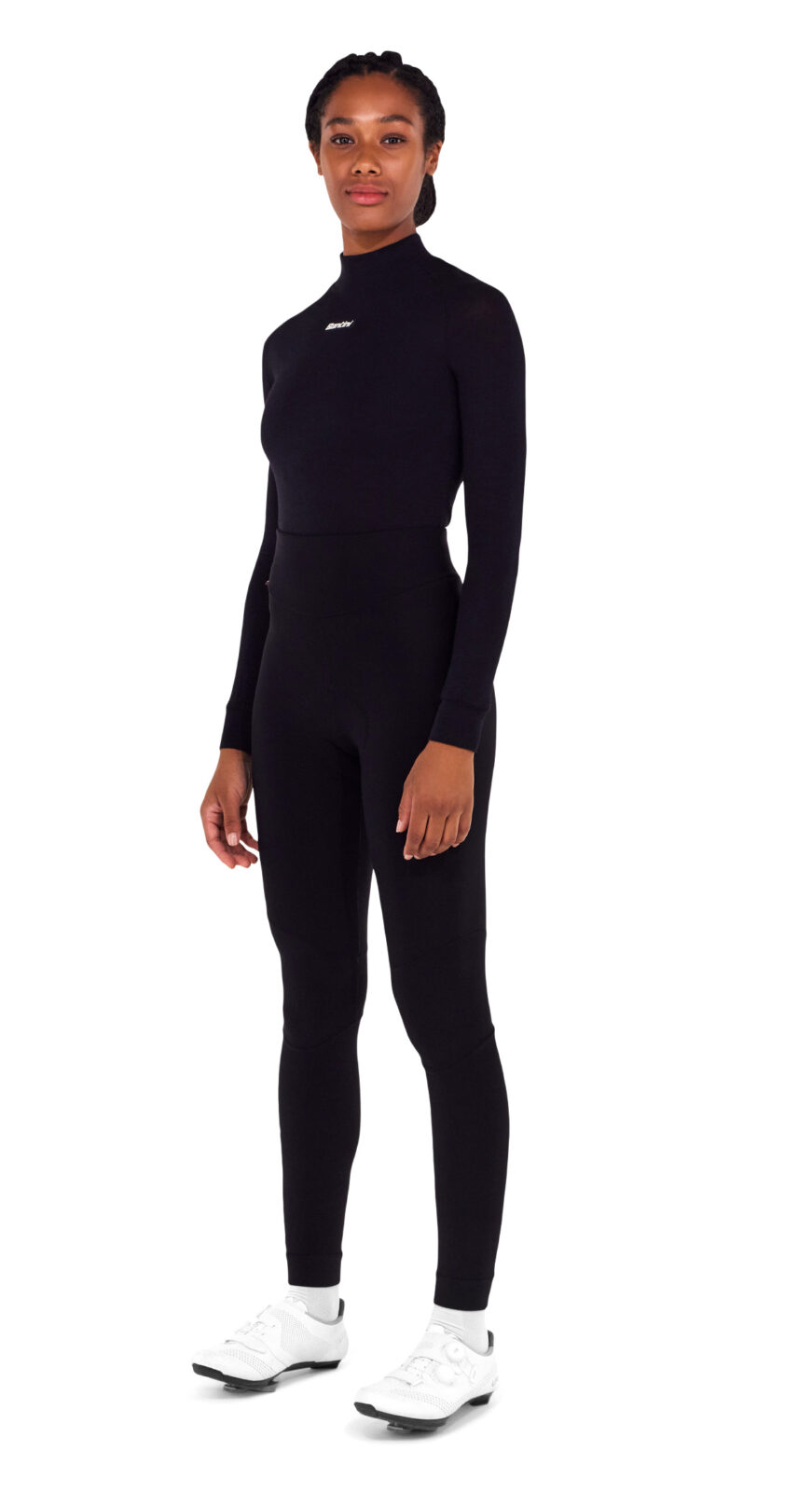
Long sleeve jerseys
Long-sleeved jerseys are useful for two purposes. One is to keep the sun off your arms, and the other is to keep the cool air away. That’s why they come in different fabric weights to suit your purpose. If you know you want your arms covered for the entire ride, you can choose a long-sleeve jersey option over a short-sleeve jersey/arm warmer combination. They are a little harder to find. Our good friends at Cinettica have long-sleeved jerseys in their range.
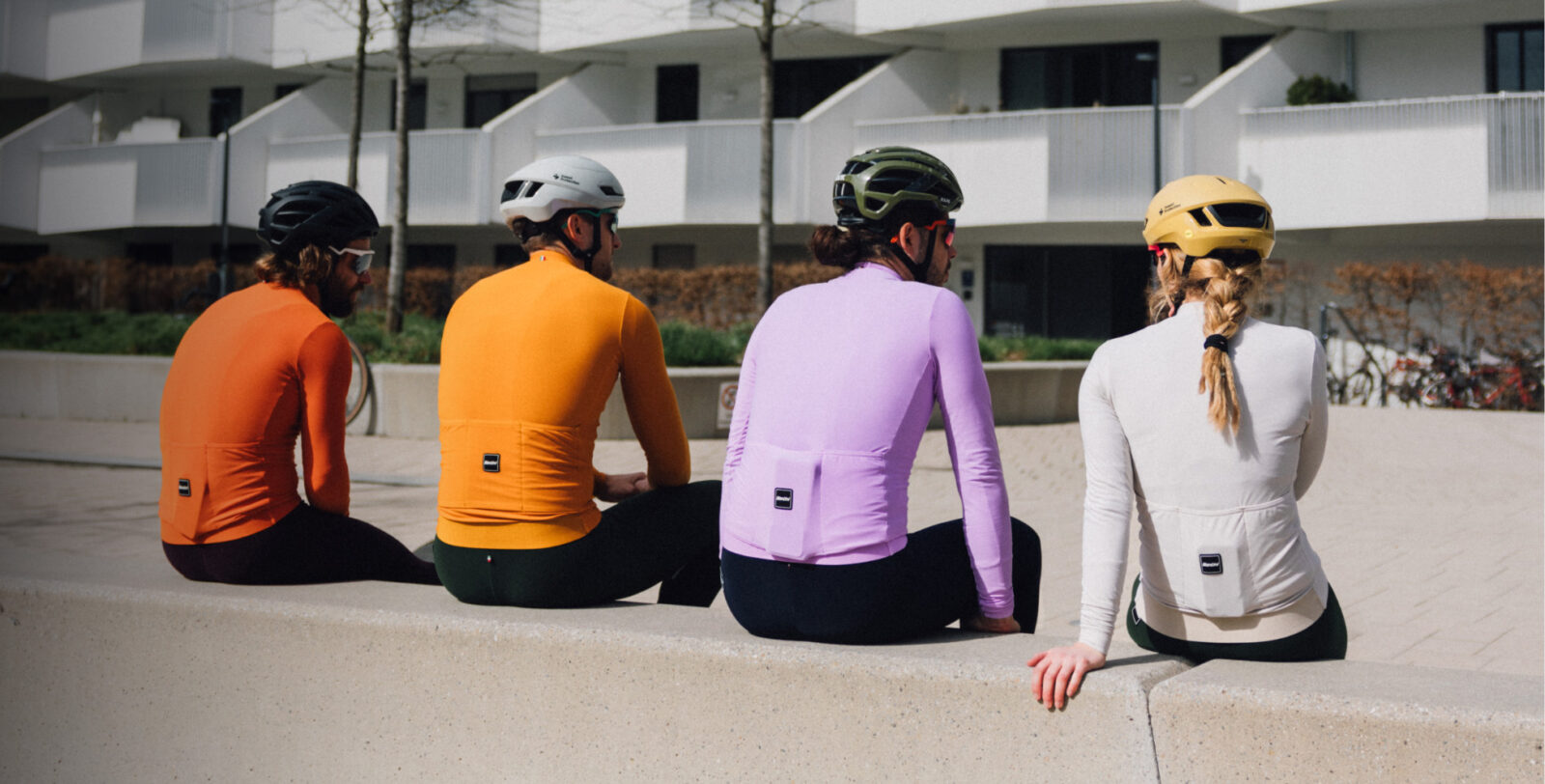
Jackets
Cycling jackets resemble long-sleeved jerseys but differ in terms of fabric weight and features that enhance warmth, such as windproof layers and fleecy linings. Like other types of jackets, they are designed to go over other clothing, so you might wear a jacket over a cycling jersey.
There is a range of cycling jackets to suit different needs, including waterproof jackets for wet weather, windproof options, fleecy-lined jackets, and many include low-light features like reflective strips. There are even jackets made entirely from reflective material, and in low light and darkness, they appear to glow.
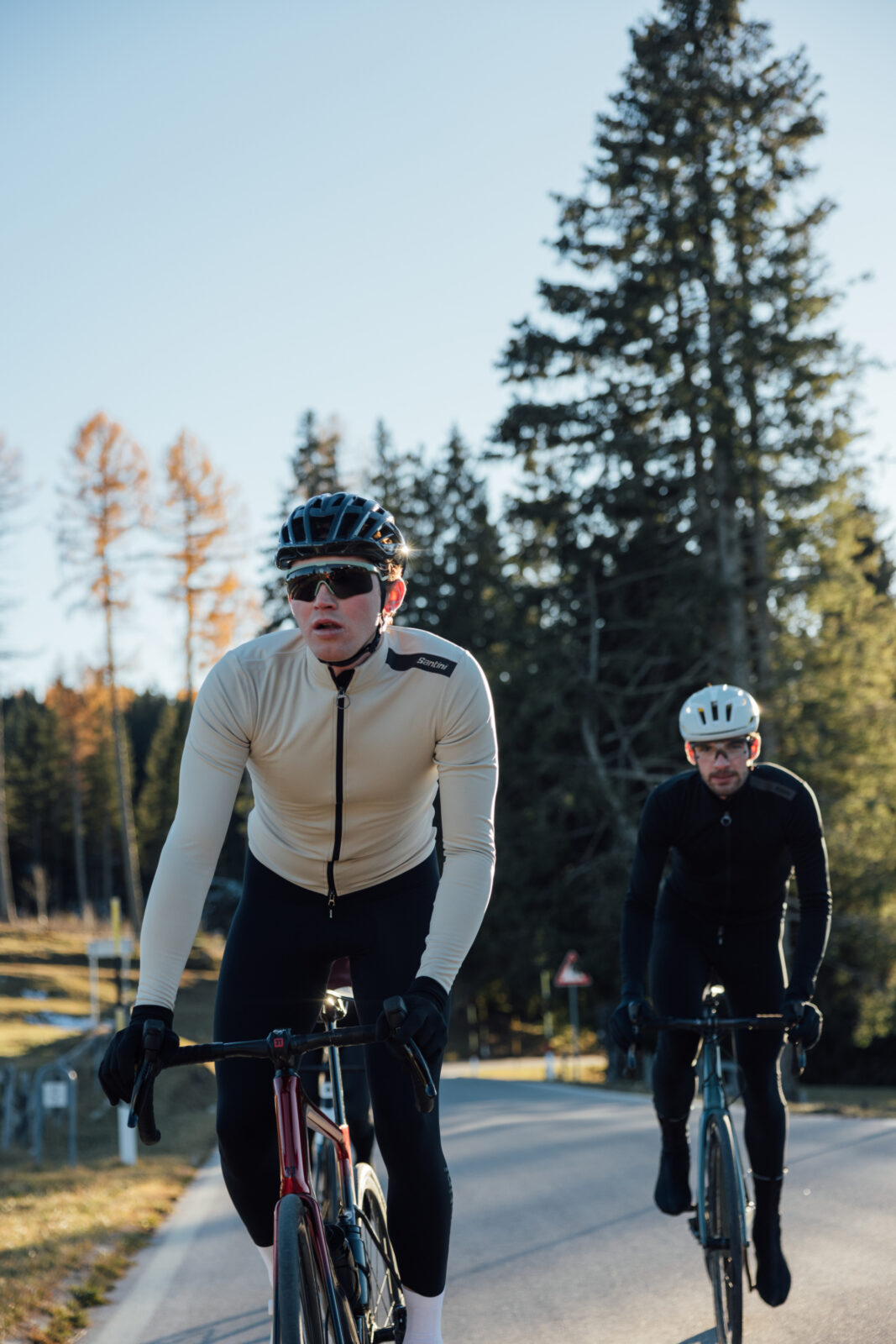
Gilets/wind vests
The gilet, or wind vest, is also an excellent garment for cooler weather. Many feature windproof material at the front and breathable mesh or fabric at the rear. This protects the front of your torso from the cool wind while riding but allows you to sweat and shed heat on your back. Gilets should also be lightweight, so you can take them off and put them in a rear pocket if you get too warm.
Many apparel manufacturers produce gilets that match their jerseys and bib knick sets, and you can also purchase them in plain colours to match a variety of other kits. Ciovita and Santini sell a range of gilets/vests.
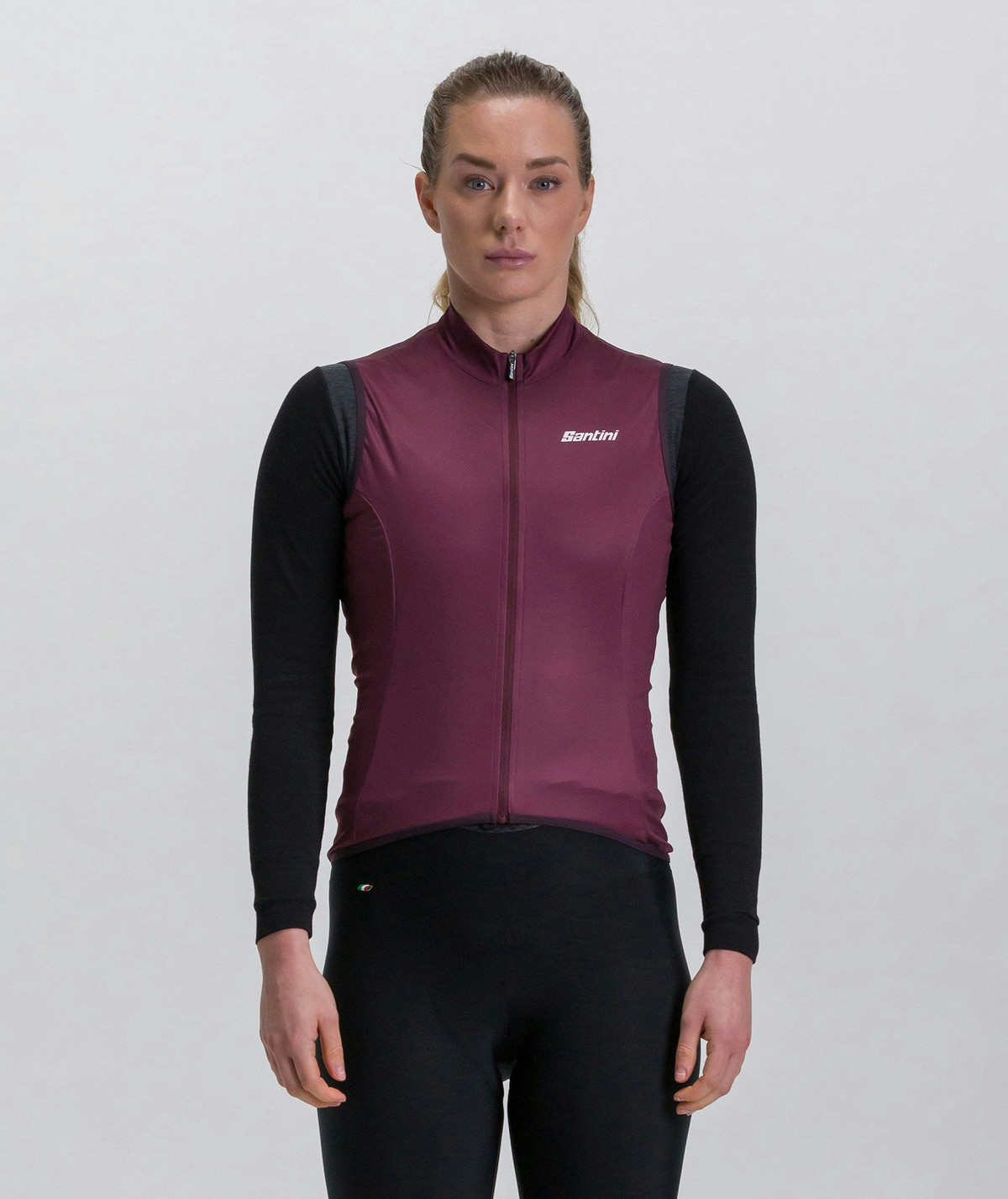
Base layers
Like many outdoor pursuits, such as skiing, hiking, boating, and more, base layers are used to keep participants warm. Base layers for cycling can be worn year-round. In hot weather, they play an important role in keeping riders cool by wicking sweat away from the body. But they come into their own as the mercury plummets.
Your choice of base layers will depend on the temperature and weather conditions where you ride, as well as your riding style.
Base layers come in sleeveless, short-sleeved and long-sleeved varieties and are made of a variety of synthetic and natural fibres. Merino base layers are often offered by cycling apparel brands, along with technical fabrics designed to withstand a variety of conditions.
Ciovita offers a range of base layers, as does Santini and many other brands.
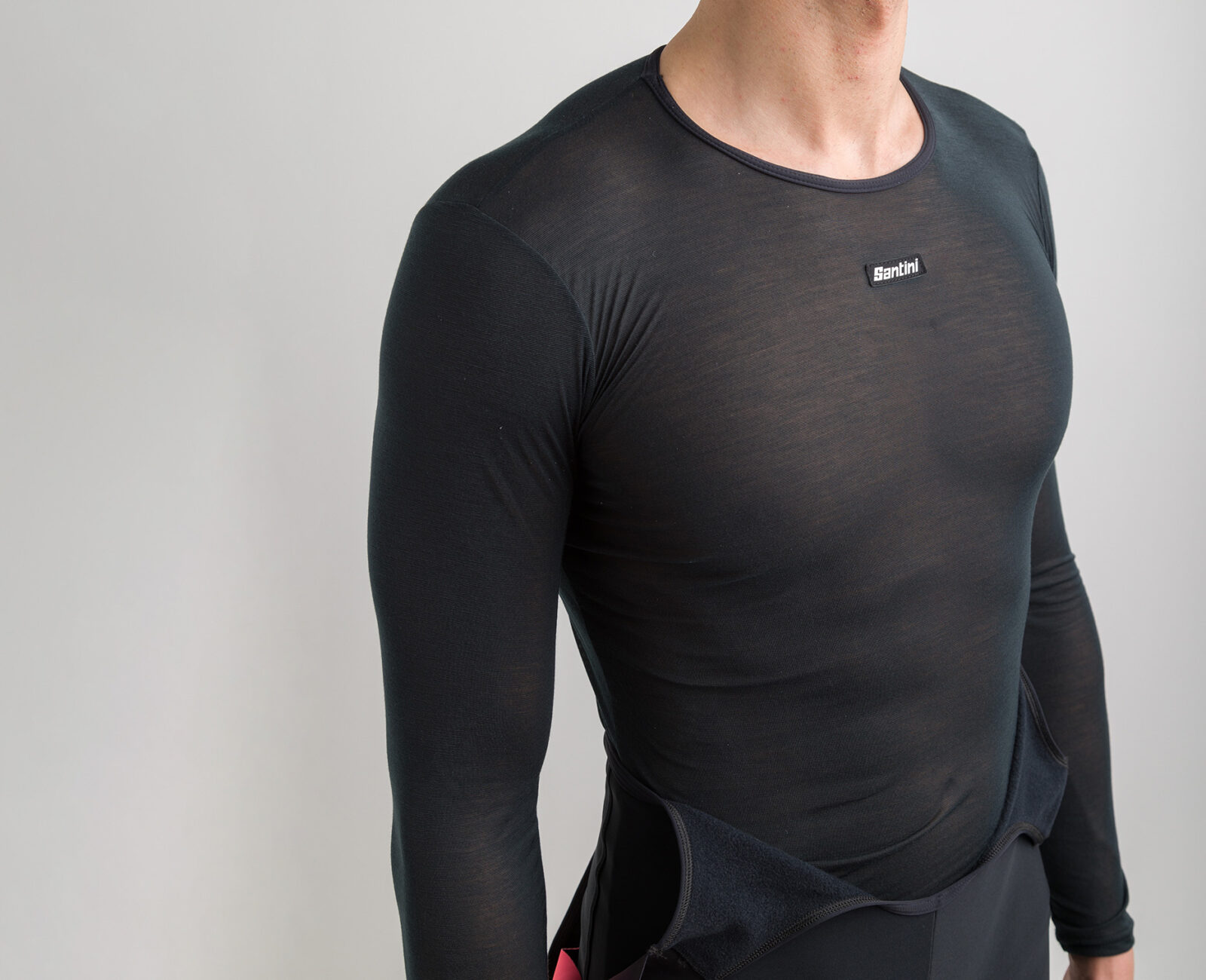
Gloves
Long-finger gloves of varying weights are also great for cooler weather. They range from lightweight gloves similar to short-finger gloves with full-finger coverage to thick, warm gloves. Your choice of glove will depend on your local conditions, but ensure you can still change gears and reach the brakes.
You can also try using glove liners underneath winter gloves for maximum warmth. Santini makes a range of warm gloves, including under-gloves, as does Ciovita.
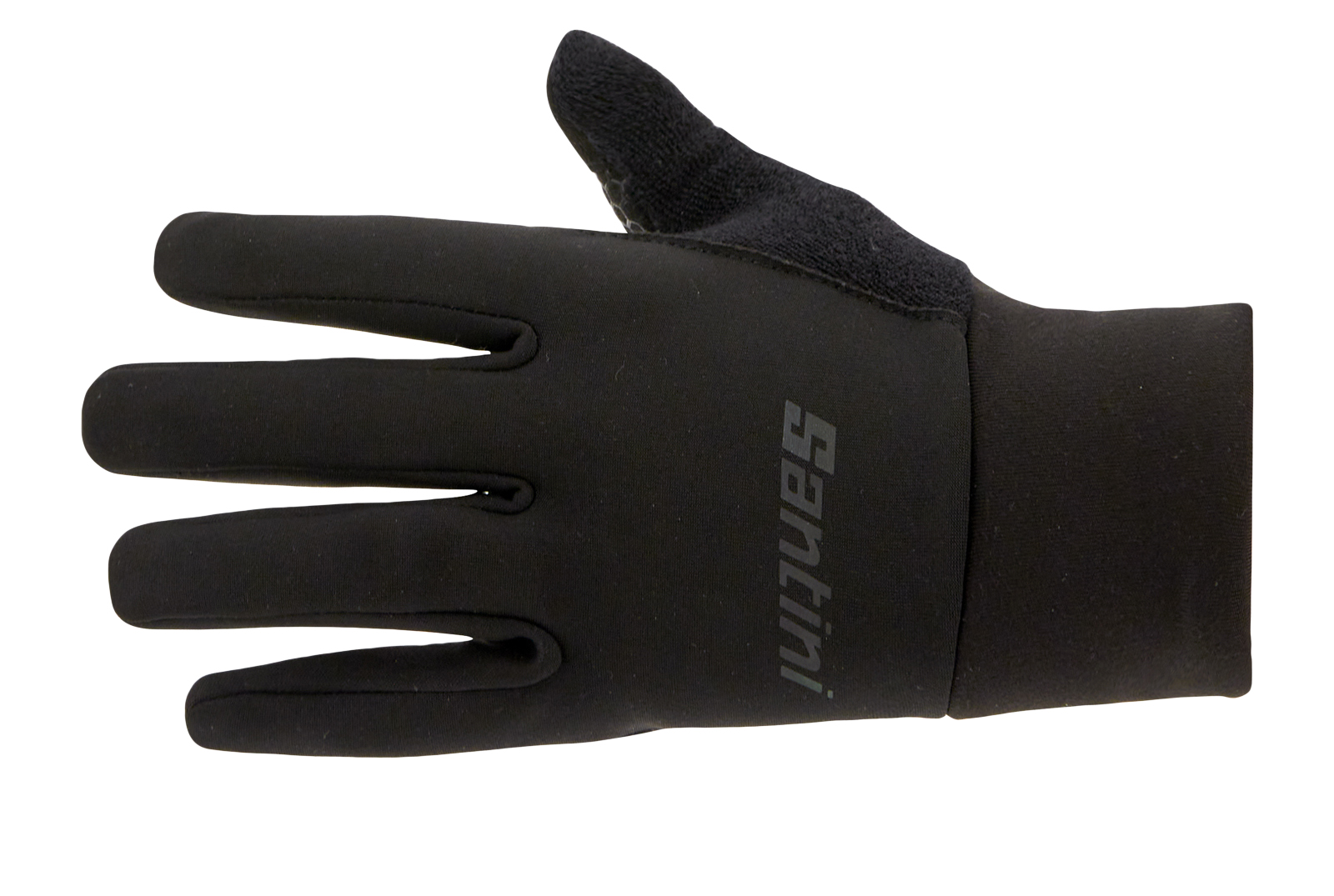
Head, ear and neck warmers
Another area of the body that is very exposed in cool weather is the head and neck. For some, a headband will suffice that covers your ears, while others will prefer to have their whole skull covered. Your choice will depend on local conditions, hair coverage, and how sensitive you are to the cold. Like most cool-weather accessories, it’s a matter of trial and error to find what works for you in various conditions.
Neck warmers are another popular accessory that are lightweight and easy to stash in your pocket part way through a ride. Neck warmers are made from a variety of materials, from light synthetic to thick wool varieties. Make sure you tuck in the neck warmer to your jersey or jacket for maximum warmth.
Many brands of neck warmers are available, including those that are not specifically designed for cycling. Ciovita and Santini both offer a number of options.
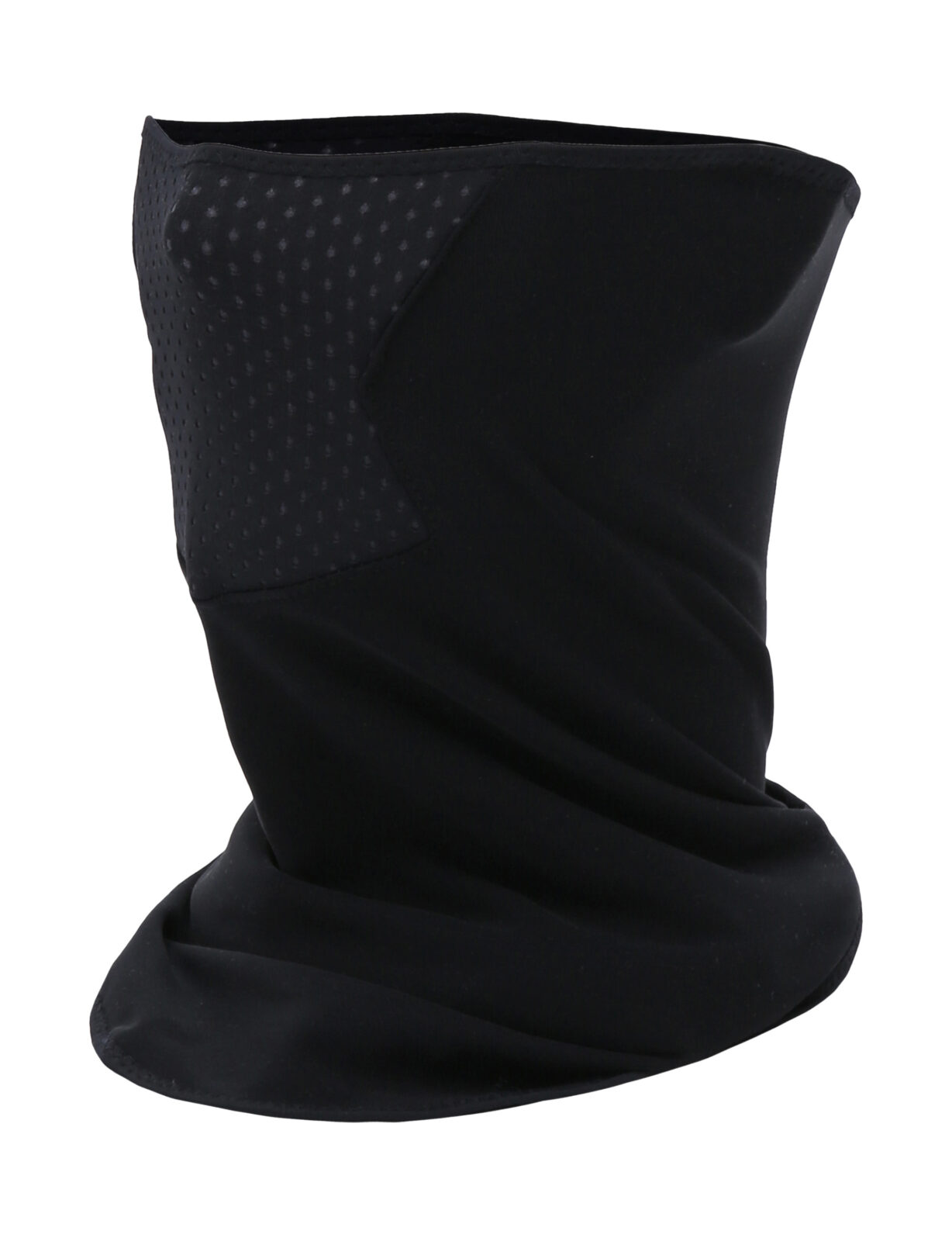
Shoe/toe covers
During winter riding, your feet are susceptible to the cold because cycling shoes often include air vents, which work well in summer but freeze your feet in colder weather.
There are many options for foot coverage, ranging from toe warmers that are great for covering the air vents at the front of your cycling shoes to full booties that cover your feet and ankles. Ciovita sells toe covers, while Santini has a range of shoe covers.
Lightweight wool socks also help keep your feet warm when riding in cold weather. They still need to be relatively thin to fit in your cycling shoes and work in combination with shoe covers.
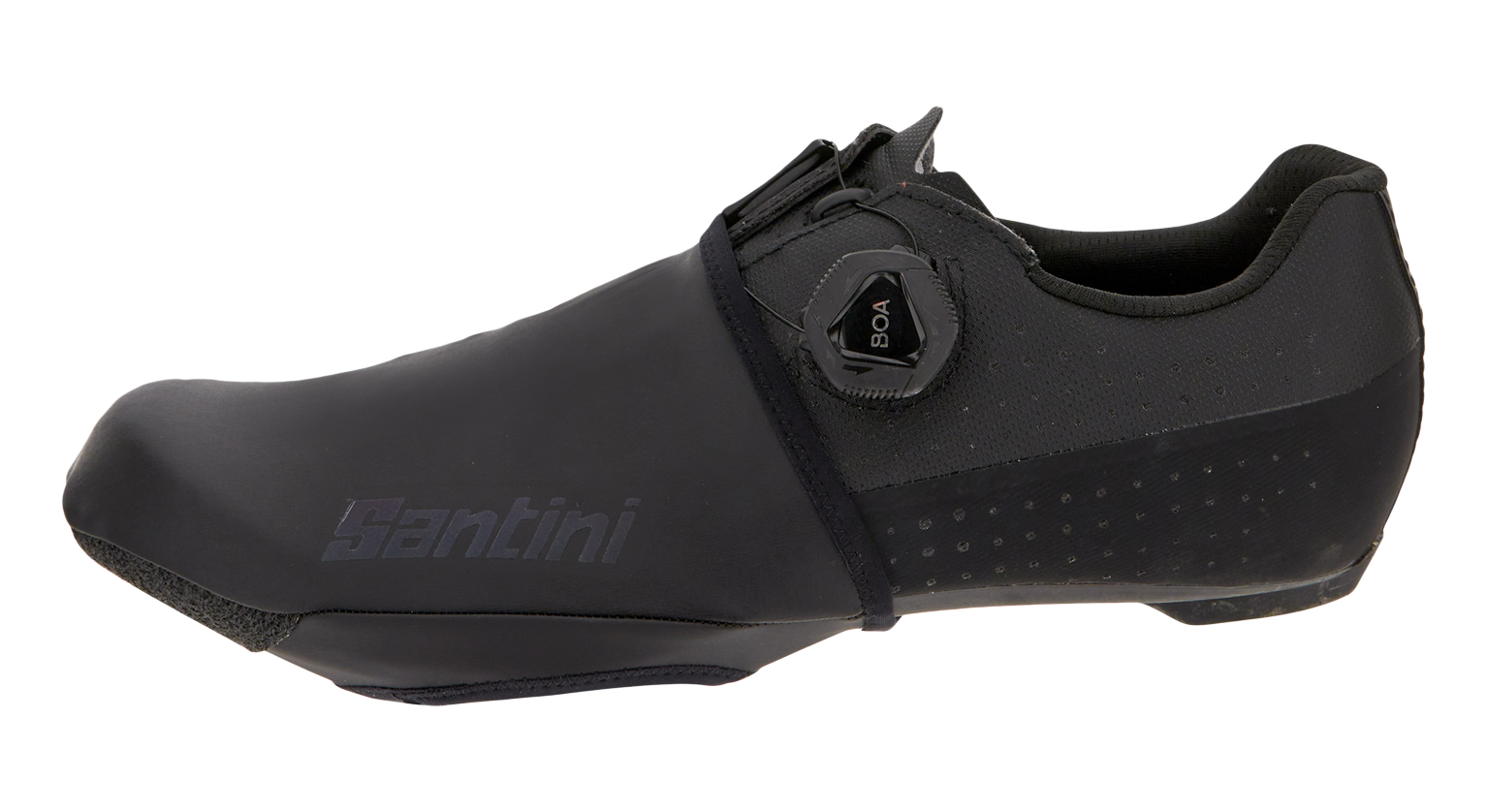
More information ciovita.com.au, santinisms.com.au
Nicola Rutzou – a long-time contributor and, most recently, the editor of Bicycling Australia. Nicola is a keen Sydney-based road cyclist who writes reviews, news, and destination pieces, as well as the weekly e-newsletter for BA online.
